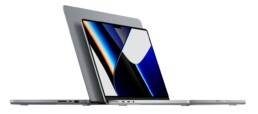Apple Unleashes MacBook Pros with New M1 Pro, M1 Max SoCs, Promises a Notch Higher Performance
- Apple’s new M1 Pro and M1 Max SoCs offer up to 10-core CPU, 32-core GPU and 64GB unified memory.
- Apple also announced new 14-inch and 16-inch MacBook Pros.
Apple’s October 2021 fall event saw a bunch of new hardware announcements. These include redesigned MacBook Pros, new colors for the HomePod minismart speakerand the much-awaitedTWS, AirPods 3. Apple also announced two new chipsets – M1 Pro and M1 Max – to power the newMacBook Pro notebooks. We a deep dive to talk about theAppleannouncement and what it means for both, Apple and its consumers.
M1 Pro, M1 Max SoCs: Supercharged with up to 32 GPU Cores, 64GB Unified Memory
Apple’sARM-based M1 chipthat debuted last year has already proved to be powerful and efficient. Now, building on theM1 architecture, Apple has announced the newM1 ProandM1 MaxSoCs. Made onTSMC’s 5nm process, the new SoCs bring up to70% faster CPU performanceover theM1 chip. These SoCs will power the new MacBook Pro 14 and MacBook Pro 16 models. Let us dive in a little deeper to look at what these new chipsets have to offer.
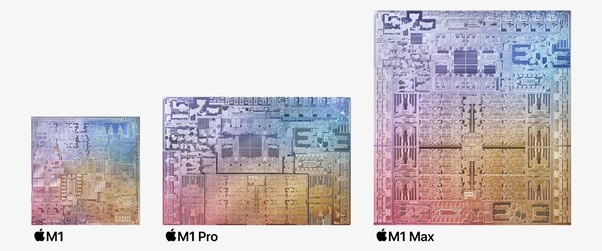
Starting with theApple M1 Pro, it comes with up to10-core CPU, a16-core GPUand up to32GB unified memorywith memory bandwidth up to 200GB/s. Higher bandwidth will allow in quickly moving data to and from memory, thus also leading to overall faster performance. The SoC also features 33.7 billion transistors. Now, in the 10-core CPU, there are eight high-performance and two high-efficiency cores.
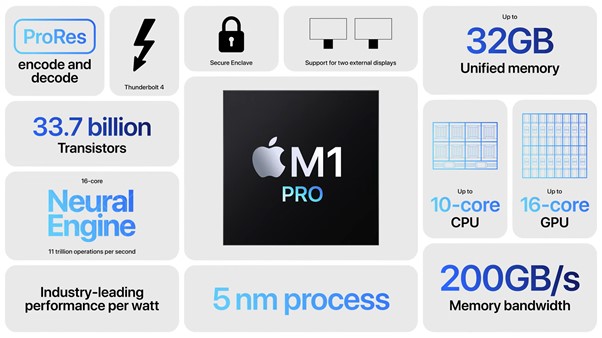
Along with the 16-core GPU, there is also amedia enginethataccelerates video processingwhile consuming less power. The acceleration is also available for theProRes codec苹果公司宣布的新iPhone 13模型. The new chipsets designed for MacBook Pros are aimed at pro users from fields ranging from content, music and movies to app creation.

“Our marketing manager, who also creates graphics and banners, is impressed with the fast and efficient M1-based MacBooks. The new M1 MacBooks show noticeable performance gains, whether you are a normal or power user. Photoshop load times are lightning quick when compared to a PC with similar specifications. It doesn’t even break a sweat when handling heavy image files and offers a stellar battery life.”
Alex Mathew – Graphic Designer & Digital Marketer
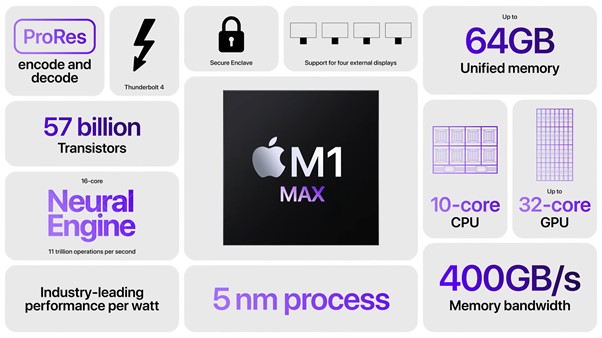
TheApple M1 MaxSoC builds on the M1 Pro, taking its amazing capabilities even further. While it still comes with the same10-core CPU, the number ofGPU coresis doubled to32, offering even faster-rendering speeds for videos and other graphics-related tasks. It hasfour times faster GPU performancecompared to the M1 SoC. The M1 Max comes with massive 57 billion transistors and also supports up to64GB of unified memory,offering up to400GB/s memory bandwidth. While the M1 Pro supports up to two external displays, the M1 Max chip lets you connect up to four external displays.

Adarsh Punj – Data Analytics & Software Developer
Redesigned MacBook Pros: 120Hz Refresh Rate Display, more Physical ports
我们一直听到重新设计的MacBook profor a while now, and Apple has finally refreshed the line-up. There are a bunch of new things that the new MacBook Pros bring, making them pro-grade notebooks for content creators. There are two models – a smaller MacBook Pro with a 14.2-inch screen and a bigger one with a 16.2-inch screen. Both areminiLED screens, like what we have seen in the iPad Pro line-up that Apple released earlier this year. These areLiquid Retina XDR displayswith anadaptive refresh rateof up to120Hz. TheProMotiontechnology canadjustthe refresh rate between24Hz and 120Hzdepending on the screen content, while also saving energy. The screen also supports apeak brightnessof1600 nits.
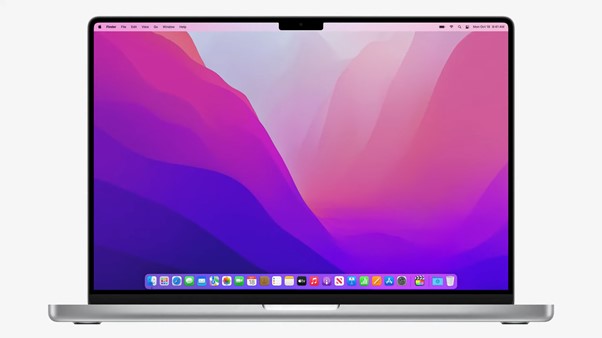
The new MacBook Pro screens have thin bezels along the top and sides and also come with anotch, just like the iPhones. The notch adds more screen real estate, while also housing a1080p web camerawith a larger image sensor that can offer better low-light performance as well. This is a good addition against the backdrop of working and learning from home, where a lot of video calls need to be taken regularly.
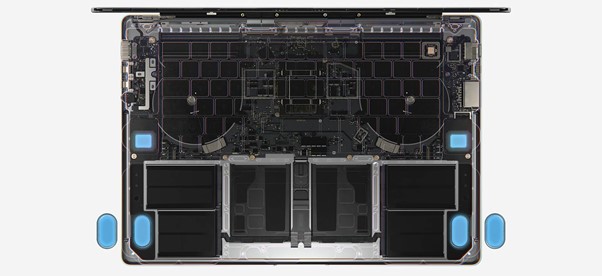
Apple has also addedthree micsthat offer up to 60% lower floor noise. This should greatly help in recording audio or attending to voice/video calls. It doesn’t stop there as the MacBook Pros also come withtwo tweetersandfour force-canceling woofersto offer a great multimedia experience.
Moving on, another big change in the new MacBook Pro line-up is the addition of more ports. TheSD card slot is back, and it is a welcome change that photographers and videographers will appreciate. Next, Apple has also added theHDMI portback. So, now you get a total of three USB Type-C ports. The 3.5mm audio jack is still present and it now brings support for high-impedance headphones.
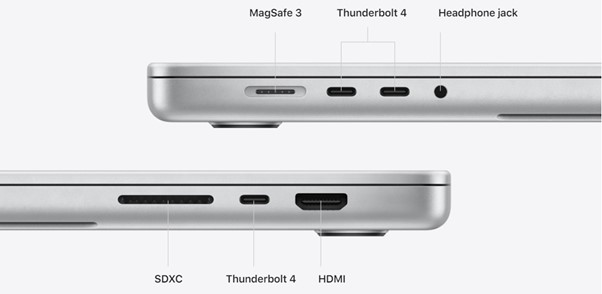
But that’s not all, Apple has brought back theMagSafe connectorwhich now supports faster charging. The base model of the 14-inch MacBook Pro comes with a 67W charging adapter, whereas the higher models come with a 96W adapter. The16-inch MacBook Promodels, on the other hand, come with a140W power adapter, which is also Apple’s firstGaN charger.

The new MacBooks have alsodone awaywith theTouch Barand come with mechanical function keys. They also include shortcuts for Spotlight, Siri, Dictation and Do Not Disturb. For secure login using biometric authentication, the MacBook Pros come with aTouch ID sensor嵌入到power button.
Coming to the pricing, the newMacBook Promodelsstart at $1,999for the14英寸model. This is a watered-down variant that comes with an M1 Pro chip featuring an 8-core CPU and a 14-core GPU. But the base RAM is 16GB along with 512GB SSD. At $2,499, you can get the one with a 10-core CPU, 16-core GPU and 1TB SSD. If you want a14英寸MacBook Prowith theM1 Max SoC, you will have to shell out$2,899for the 24-core GPU model and $3,099 for the 32-core GPU model.
The16-inch MacBook Prostarts at$2,499for the base model with an M1 Pro 10-core CPU and 16-core GPU. The one with theM1 Max SoCfeaturing a 32-core GPU costs$3,499. The top-end model with64GB unified memoryand8TB storagewill set you back by$6,099.
No doubt, the new MacBook Pros are expensive as they bring key improvements, from faster processors to better displays and higher resolution cameras among others. These notebooks are designed to attract the pro users looking to ease their workflows and, in turn, bring a better ROI in the long run.
Even for a content creator like me, who uses different programs and apps for tasks like editing podcasts and videos, a powerful notebook that can handle my workflow swiftly is important. This is especially true when editing videos shot in 4K (60fps), where trimming each clip on the timeline and adding music and voice-over along with text should be a smooth experience. Once the editing is done, rendering the video takes a considerable amount of time, and it gets a little frustrating if you want to make the smallest changes to the video and render it again.
During my brief usage, rendering a one-minute 8K video on a Windows-based laptop with the Intel Core i7 processor, 16GB RAM and GeForce MX250 graphics card took over four minutes. The same took less than 40 seconds on aMacBook Air M1(8K to 4K 60fps). I am looking forward to the new MacBook Pros to see how faster they get at these tasks while improving efficiency.
Key Takeaways:
- The MacBook Pros come with “pro pricing” but promise faster performance while lowering power consumption. How well these machines help in making the workflow easier remains to be seen.
- The M1 Pro and Max SoCs may be good for content creators and graphic designers but they don’t seem to be designed for hardcore gaming.


